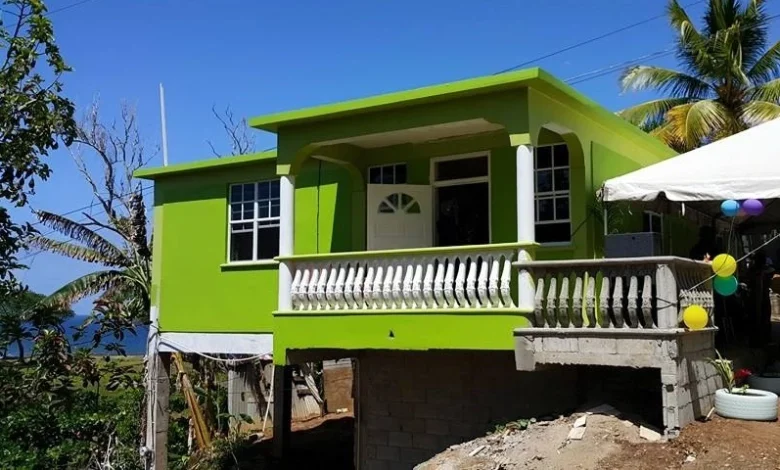Climate-Resilient Homes in Dominica

In the face of escalating climate threats, climate-resilient homes in Dominica have become a cornerstone of the island’s national development and disaster preparedness strategy. These structures are built to endure hurricanes, earthquakes, and floods, protecting lives, preserving livelihoods, and ensuring long-term sustainability for vulnerable communities. They reflect the government’s wider goal of making Dominica the world’s first climate-resilient nation, a vision shaped by the catastrophic damage of Hurricane Maria in 2017.
Defining Climate-Resilient Homes
Climate-resilient homes are designed and constructed to withstand extreme weather conditions and environmental shocks. In Dominica, these homes are:
- Built with reinforced concrete walls and roofs
- Outfitted with impact-resistant windows and storm shutters
- Elevated or protected against flooding and landslides
- Fitted with water storage tanks, proper drainage systems, and in some cases, solar energy units
- Aligned with building codes introduced or revised post-Hurricane Maria
These homes not only serve as safe havens during natural disasters but also help reduce the need for repeated reconstruction, thereby lessening economic burdens on households and the state.
Government-Led Construction and Policy
The bulk of Dominica’s climate-resilient housing developments are led under the Housing Revolution Programme, with substantial funding from the Citizenship by Investment (CBI) Programme and technical input from international partners like MMCE and UNDP.
Flagship housing communities include:
- Bellevue Chopin Resettlement Village: Built to relocate residents from the devastated Petite Savanne area.
- Cotton Hill Development in Portsmouth: An urban housing hub with multiple concrete units.
- Kalinago Territory Units: Tailored for indigenous communities with culturally sensitive designs.
Policy-wise, climate resilience is embedded within the Climate Resilience and Recovery Plan (CRRP), supported by institutions like the Climate Resilience Execution Agency for Dominica (CREAD). All public housing construction now adheres to improved climate-smart designs, marking a systemic shift from pre-2017 models.
Impact on Communities
The shift toward climate-resilient housing has had several effects:
- Improved Safety: Families in vulnerable areas now have access to durable homes that serve as both daily residences and storm shelters.
- Social Stability: Reduced displacement from disaster-prone zones helps maintain school attendance, employment, and access to services.
- Psychological Relief: Residents report feeling more secure and confident in facing future storms.
- Community Regeneration: Large housing clusters often come with new roads, lighting, water access, and recreation areas, revitalizing entire communities.
Challenges and Criticism
Despite its progress, the roll-out of climate-resilient homes has encountered some hurdles:
- Slow Distribution: Not all regions have received homes equally, with some families still living in makeshift conditions years after Maria.
- Transparency Concerns: Criticism over how beneficiaries are selected, particularly during election seasons.
- Construction Quality: A few units have been flagged for minor structural issues or poor finishing, raising concerns about long-term durability.
- Local Labour: Dependence on foreign contractors has raised calls for greater inclusion of Dominican builders and engineers.
Future Directions
Dominica plans to continue expanding its climate-resilient housing initiative with an emphasis on:
- Smart green building practices (e.g., energy-efficient materials, rainwater harvesting)
- Inclusive design that reflects the needs of persons with disabilities, the elderly, and large families
- Integration with relocation programmes, such as the recent IDA-funded project to move residents from high-risk zones
- Community planning to ensure housing developments are not isolated but connected to schools, clinics, and economic opportunities
Looking Ahead
The creation of climate-ready homes in Dominica speaks to a wider goal of safeguarding citizens’ dignity and security. In an era of escalating environmental threats, these structures are playing a key role in preserving life and daily sustenance across one of the region’s most climate-sensitive territories.




